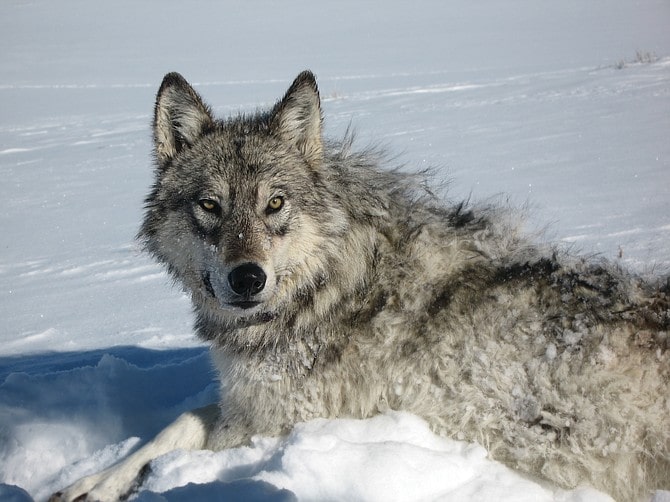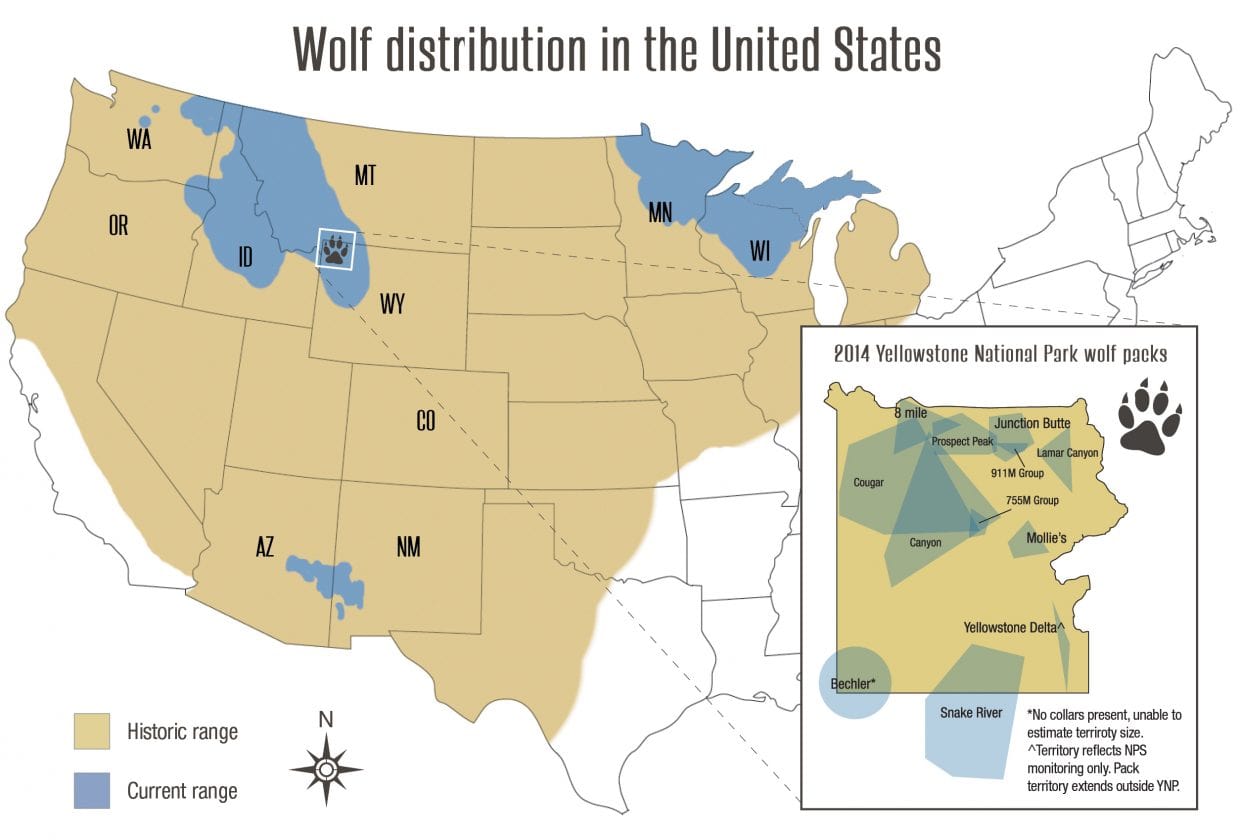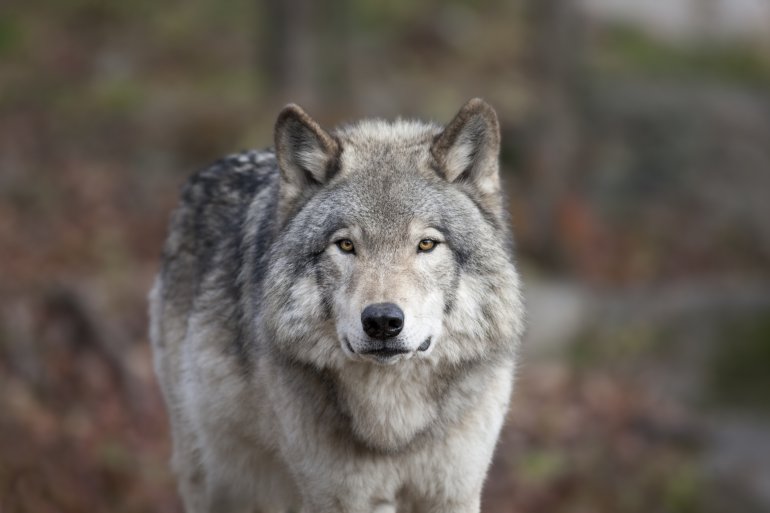
Three times over the last 25-years, Colorado legislature has voted against reintroducing wolves back into the state’s ecosystem. The problem is, somebody forgot to tell the wolves, and they might just be establishing themselves back in the Centennial State anyway.
- You might also like: Oregon Wolf “OR-54” Confirmed Near Truckee California
Supporters of humans meddling with nature hope that a reintroduction would bring balance to an ecosystem that’s seeing effects of a high elk population – a food source for the wolf. On the other hand, others fear that reintroduction could be too disruptive, and could leave some ranchers, who depend on elk hunting, bankrupt. Not only that, but safety is a big concern as children in New Mexico have come face to face with wolves and have even suffered deaths, and farmers who raise livestock are unsettled by the fact that wolves could easily kill many of their animals.
Canis Lupus, more commonly known as the gray wolf, was reintroduced to Yellowstone in 1995 and over the years its population slowly flourished, helping the diminishing ecosystem eventually thrive (if you’ve never seen the above 5-minute video, I highly recommend checking it out – fascinating). And due to the recent reintroduction of the northern gray wolf in Wyoming, Idaho, and Montana, Colorado could see the migration of the large animal for the first time since the 1940s, state wildlife officials said.
“While we don’t have an established population in the state, we’ve had numerous sightings over the last decade due to the increase in number of wolves in surrounding states,” said Colorado Parks and Wildlife spokesman Mike Porras.
Wolf sightings in Colorado have increased over the last decade or so. In June 2004, a wolf died along Interstate 70 after being hit by a car. Five years later, in 2009, a GPS-collared wolf traveled 3,000 miles before dying from a banned poison in Rio Blanco County. In April 2015, a coyote hunter accidentally killed a gray wolf near Kremmling, 100 miles west of Denver. Killing a wolf or any endangered species can result in serious penalties, including criminal charges, a year in prison and a fine of up to $100,000.
The public is urged to report any sighting of wolves in Colorado by filling out the online Wolf Sighting Form.

Outside of confirmed and unconfirmed visual sightings of wolves in the state over the last decade, there have been multiple reports of scat and tracks resembling wolves, as well as reports of howling in numerous areas of the state. Wolves are coming, slowly.
- You might also like: VIDEO: Enormous Wolf Attacks Man’s Dog in Saskatchewan, Canada
Officials are aware of this, in-fact Colorado Parks and Wildlife even has a 10-year-old plan, “Findings and Recommendations for Managing Wolves that Migrate into Colorado.” Strategies involve adaptive management and damage payments for livestock killed. What’s more, “Migrating wolves should be allowed to live with no boundaries where they find habitat,” and “Wolf distribution in Colorado will ultimately be defined by the interplay between ecological needs and social tolerance.” Once here, state wildlife staff “will implement programs to make sure that wolves are included as a part of wildlife heritage”.

So, whether they’ll be welcomed or not, the wolves might just have the final say. And it appears that, slowly but surely, they are re-establishing themselves in the Colorado ecosystem and will be here to stay.